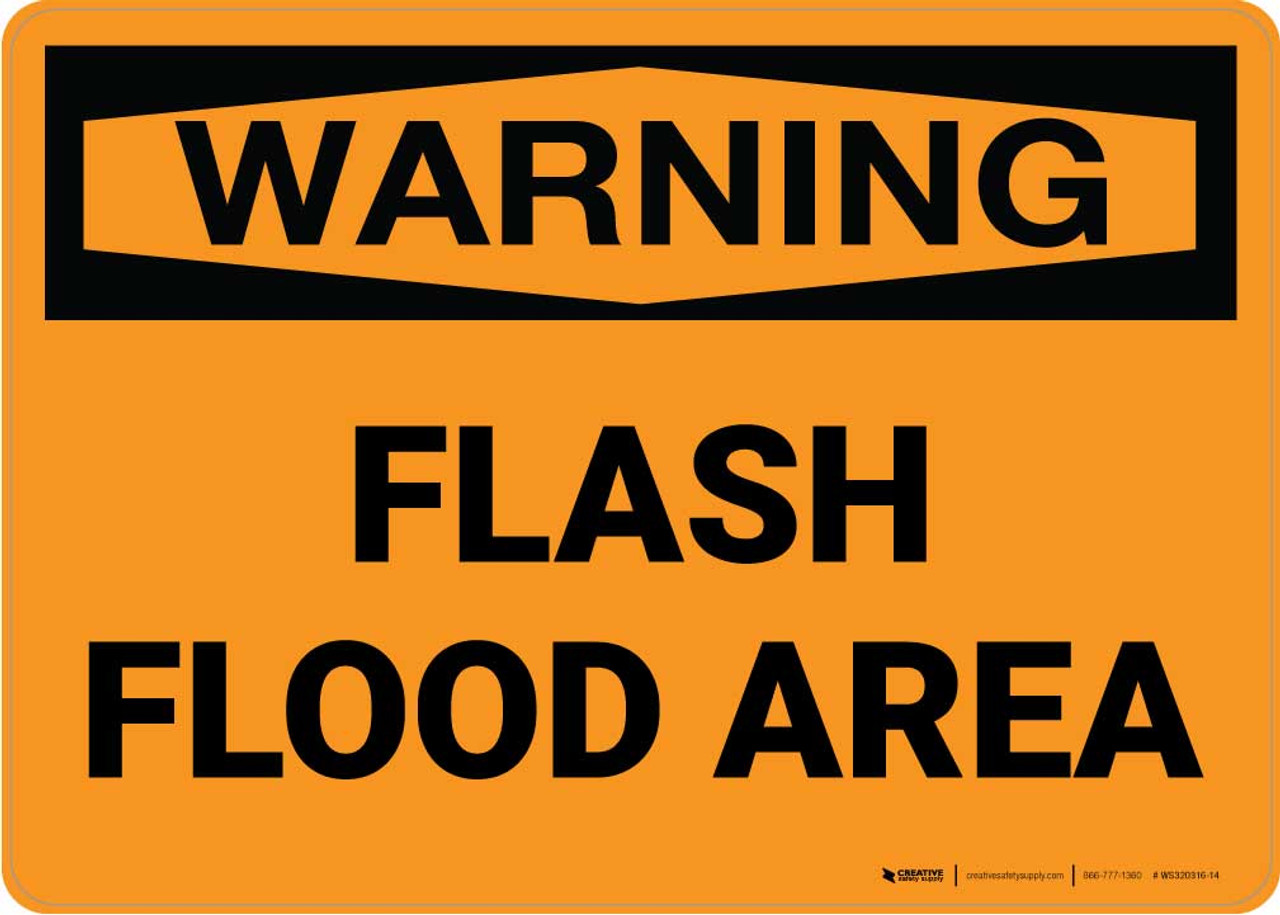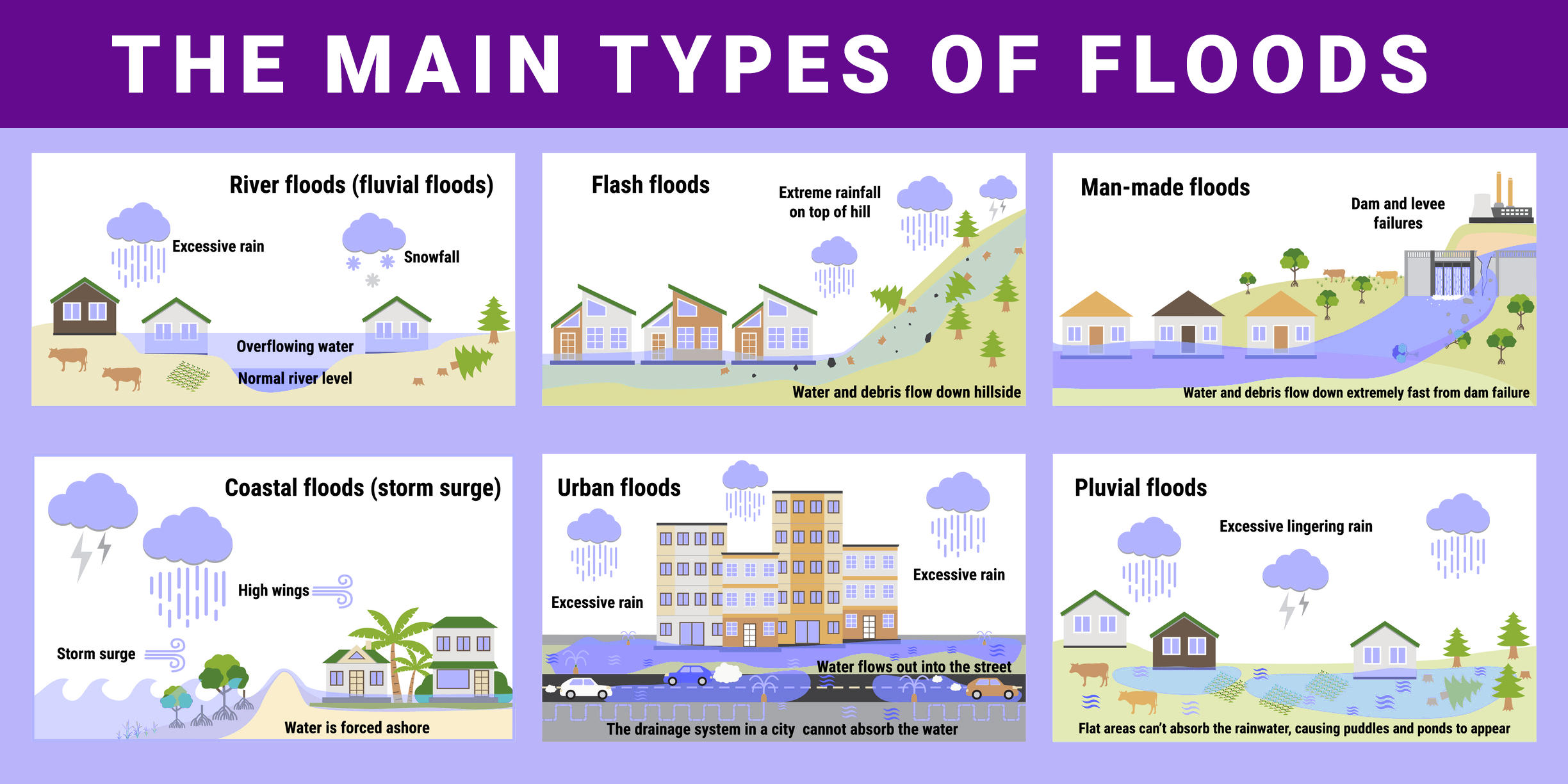What Is A Flash Flood? Understanding Flood Warnings And Alerts

Table of Contents
What is a Flash Flood?
A flash flood is a rapid, unexpected rise in water levels, typically within six hours of heavy or excessive rainfall. This contrasts with slower-developing riverine floods, which often take days or even weeks to reach their peak. The suddenness of a flash flood is what makes it so dangerous, leaving little time for evacuation or other protective measures. Understanding the causes and characteristics of flash floods is the first step in effective preparedness.
Causes of Flash Floods:
- Intense, short-duration rainfall: Torrential downpours, often associated with thunderstorms or hurricanes, are the primary cause. The ground becomes saturated quickly, unable to absorb the excess water.
- Dam or levee failures: Breaches in man-made structures designed to control water flow can unleash massive volumes of water downstream, causing sudden and devastating flash floods.
- Sudden release of water from melting snow or ice: Rapid snowmelt, especially during periods of warm weather or heavy rainfall, can overwhelm rivers and streams, leading to flash flooding. This is particularly common in mountainous regions.
- Upstream flooding: Flooding in upstream areas can rapidly propagate downstream, causing flash floods in lower-lying areas with little warning.
Characteristics of Flash Floods:
- Fast-moving water: Flash flood waters move incredibly quickly, carrying debris and sediment that can cause significant damage.
- Limited warning time: The rapid onset of flash floods often leaves little time for people to react and evacuate.
- Significant debris flow: Flash floods often carry significant amounts of debris, including rocks, trees, and other materials, which can cause damage to property and pose a serious threat to life.
- Potential for widespread damage: Flash floods can cause extensive damage to infrastructure, homes, businesses, and agricultural land.
Recognizing Flash Flood Warning Signs
Recognizing the signs of an impending flash flood is crucial for timely action. Both natural indicators and official warnings should be taken seriously.
Natural Warning Signs:
- Rapidly rising water levels in streams, rivers, and creeks: A sudden and significant increase in water levels is a major warning sign.
- Sudden increase in water flow: Observe the speed and volume of water; a dramatic increase signifies potential danger.
- Water overflowing banks: When water overflows its normal banks, it's a clear indication that a flash flood may be imminent.
- Muddy water: A sudden change in water color to muddy or brown indicates increased sediment and erosion, signaling potential flooding.
- Unusual sounds like roaring water: A noticeable increase in the sound of rushing water can precede a flash flood.
Official Warnings:
- Flash Flood Watch: A Flash Flood Watch means conditions are favorable for flash flooding. This is a time to prepare: monitor weather reports, review your evacuation plan, and gather essential supplies.
- Flash Flood Warning: A Flash Flood Warning indicates that flash flooding is occurring or is imminent. This is a time for immediate action: evacuate if necessary, move to higher ground, and stay informed.
- Emergency Alerts: Stay informed through various channels such as NOAA Weather Radio, mobile weather apps (like those from the National Weather Service), and local news broadcasts. These services provide timely alerts and critical information during severe weather events.
How to Stay Safe During a Flash Flood
Preparation and swift action are key to surviving a flash flood. Having a plan in place before, during, and after a flood significantly reduces risk.
Before a Flash Flood:
- Develop a family evacuation plan: Determine escape routes and meeting points.
- Identify safe evacuation routes: Know multiple routes to higher ground and alternate destinations.
- Know your flood risk: Understand if you live in a flood-prone area and your property’s vulnerability.
- Sign up for emergency alerts: Register for local warning systems and weather alerts via text, email, or app.
During a Flash Flood:
- Move to higher ground immediately: This is the most crucial step. Do not wait for instructions; evacuate immediately if a warning is issued.
- Avoid flooded areas: Never attempt to drive or walk through floodwaters. The water may be deeper or faster-moving than it appears.
- Never drive through floodwaters: Even a small amount of water can sweep a car away. "Turn around, don't drown" is crucial advice.
- Do not attempt to walk or swim through floodwaters: The currents can be incredibly strong, and the water may be contaminated with dangerous debris or pollutants.
After a Flash Flood:
- Avoid contact with floodwaters: Floodwaters are often contaminated with sewage, chemicals, and other hazardous materials.
- Check on neighbors: Ensure the safety of those around you, especially vulnerable populations.
- Report damage to local authorities: Contact emergency services and local government agencies to report damage and request assistance.
- Be aware of potential hazards like downed power lines: Avoid contact with any downed power lines or damaged infrastructure.
Flash Flood Preparedness and Mitigation
Proactive measures can significantly reduce the impact of flash floods. Preparation extends beyond simply having an emergency kit; it includes long-term planning and community involvement.
- Develop a family emergency plan: This includes communication strategies, evacuation routes, and a designated meeting point. Consider multiple escape routes in case one becomes impassable.
- Purchase flood insurance: Flood insurance is often not included in standard homeowner's insurance policies. It provides crucial financial protection in the event of flood damage.
- Elevate valuable possessions and appliances: Moving important items to higher levels within your home can minimize damage.
- Learn about your local floodplains and risk areas: Understanding your community's vulnerability helps in planning and preparedness.
- Participate in community preparedness programs: Engage with local initiatives to enhance community resilience and response capabilities.
Conclusion
Understanding the risks associated with a flash flood and knowing how to respond to warnings is paramount. By following the safety guidelines outlined above and staying informed about weather conditions, you can significantly reduce your risk during a flash flood. Remember, when a flash flood warning is issued, immediate action is crucial. Your preparedness and prompt response to flash flood alerts can save lives and minimize property damage. Stay safe and informed about the potential for flash floods in your area. Develop a robust flash flood plan today to protect your family and property.

Featured Posts
-
 Flood Alerts Explained Types Sources And How To Respond
May 25, 2025
Flood Alerts Explained Types Sources And How To Respond
May 25, 2025 -
 Dow Jones Index Cautious Climb Continues After Strong Pmi Data
May 25, 2025
Dow Jones Index Cautious Climb Continues After Strong Pmi Data
May 25, 2025 -
 Understanding The Net Asset Value Nav Of The Amundi Dow Jones Industrial Average Ucits Etf Distributing
May 25, 2025
Understanding The Net Asset Value Nav Of The Amundi Dow Jones Industrial Average Ucits Etf Distributing
May 25, 2025 -
 Analysis Sses 3 Billion Spending Cut And The Economic Outlook
May 25, 2025
Analysis Sses 3 Billion Spending Cut And The Economic Outlook
May 25, 2025 -
 Porsche 956 Muezede Tavan Sergisi Neden
May 25, 2025
Porsche 956 Muezede Tavan Sergisi Neden
May 25, 2025
Latest Posts
-
 Ealas Grand Slam Debut In Paris A Look Ahead
May 25, 2025
Ealas Grand Slam Debut In Paris A Look Ahead
May 25, 2025 -
 Eala Ready For Paris Grand Slam Debut
May 25, 2025
Eala Ready For Paris Grand Slam Debut
May 25, 2025 -
 Naomi Campbells Potential Absence From Met Gala 2025 Truth Behind The Wintour Feud Claims
May 25, 2025
Naomi Campbells Potential Absence From Met Gala 2025 Truth Behind The Wintour Feud Claims
May 25, 2025 -
 Did Anna Wintour Ban Naomi Campbell From The Met Gala The 2025 Controversy
May 25, 2025
Did Anna Wintour Ban Naomi Campbell From The Met Gala The 2025 Controversy
May 25, 2025 -
 Naomi Campbell Reportedly Banned From Met Gala 2025 The Story Behind The Headlines
May 25, 2025
Naomi Campbell Reportedly Banned From Met Gala 2025 The Story Behind The Headlines
May 25, 2025
